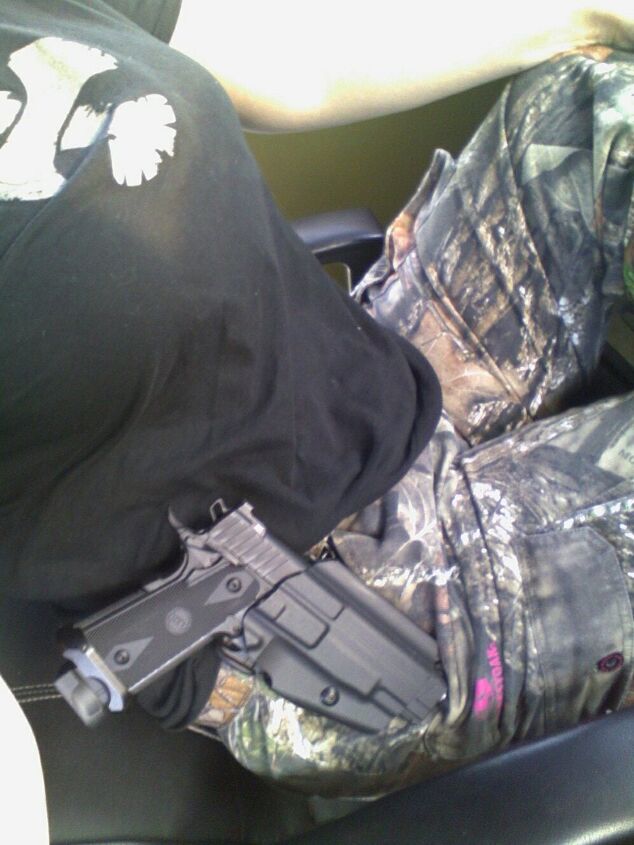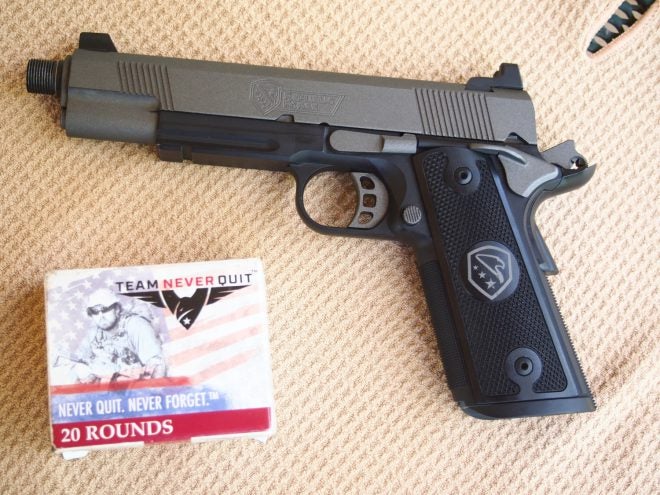When Col. Jeff Cooper came up with what he called the conditions of readiness he had the 1911 in mind. Cooper was a 1911 man – well, he was also a 10mm man, but that’s another story. For those who are unfamiliar with the various conditions, here they are explained as briefly as possible:
Condition Three: Pistol has a loaded magazine but an empty chamber. Hammer is down. The U.S. military used this method back when the 1911 was their standard issue. More recently this has been referred to as the Israeli Method due to the fact that Israeli law enforcement and soldiers have been carrying this way with their single-action pistols.
Condition Two: Pistol has a loaded magazine and a round chambered. Hammer is down. Thumb safety engaged.
Condition One: Pistol has a loaded magazine and a round chambered. Hammer is cocked. Thumb safety engaged. This is the method known as “cocked and locked.”
Cooper’s conditions of readiness can easily be modified to include striker-fired pistols. Some have external safeties while some do not, so there would need to be an allowance made for those guns that do not have external safeties. It really all boils down to one thing, though: do you believe it is safe to carry a gun with a round chambered? Furthermore, do you believe carrying a pistol for self-defense purposes without a round chambered makes the presence of said firearm pointless?
The argument against carrying with a round chambered is simple: the gun owner might shoot themselves in the [insert body part here]. The argument for carrying with a round chambered is also reasonably simple: it takes time to chamber a round, so having it ready saves precious time in case of an assault of some kind.
Here’s the thing. Both arguments make a valid point. Both are dependent on skill level – or should be. Carrying Condition One implies the person in question has the training necessary to carry and use their gun safely and accurately. However, that is not always the case. There are quite a few people out there carrying guns who either have no business carrying in the first place or lack the experience needed to carry Condition One. So, should someone who lacks the experience to carry Condition One leave their gun at home until they’re ready to carry using that method?

Racking the slide of this Republic Forge 1911 will cock the hammer.
There’s a steady flow of pictures on social media illustrating this point. Gun owners have shot themselves through their buttocks, feet, hands, and groin. They’ve lived to tell the tale and have, for whatever reason, chosen social media as their platform. Rather than be horrified and chastised by the experience, they laugh it off and blame the gun or holster. It must be faulty gear, because it could not possibly be due to their own stupidity and/or lack of experience, right?
Guns fire when their trigger is pulled. While there have certainly been instances of faulty triggers or safeties, those are the exception rather than the rule. Keep your finger off the trigger until you are on target. It’s one of the four golden rules all gun owners should know, but there is a difference between knowing it and following it.

Condition One, striker-fired
What do you think? Is a gun carried in anything but Condition One useless? Should it be left at home? Or is any gun better than no gun, even if the shooter has to take the time to chamber a round?
This all comes down to training.Training isn’t just an important part of being a gun owner, it’s vital. Guns are not toys, something that seems to be forgotten with increasing frequency. That means they should be treated with respected and trained with accordingly. Putting fifty rounds through your pistol a couple times a year is not training. Standing in a shooting lane for the entirety of your trigger time is also not proper training. It can be a start, but it should never be all you do. In a life-or-death situation you won’t have time to get in your favorite stance, carefully obtain a good sight picture, and squeeze off a few measured shots at a stationary, unreactive target. In fact, odds are good you won’t be extending your arms at all but will instead be shooting from your hip. It happens with a muscle-trembling rush of adrenaline. It happens without time to consciously mull over your options. It happens fast.
The various conditions of readiness seem dependent on training both as they were originally written and revised for other types of handguns. What do you think, do you train for fun or train to fight? What is your condition of readiness?
 Your Privacy Choices
Your Privacy Choices
